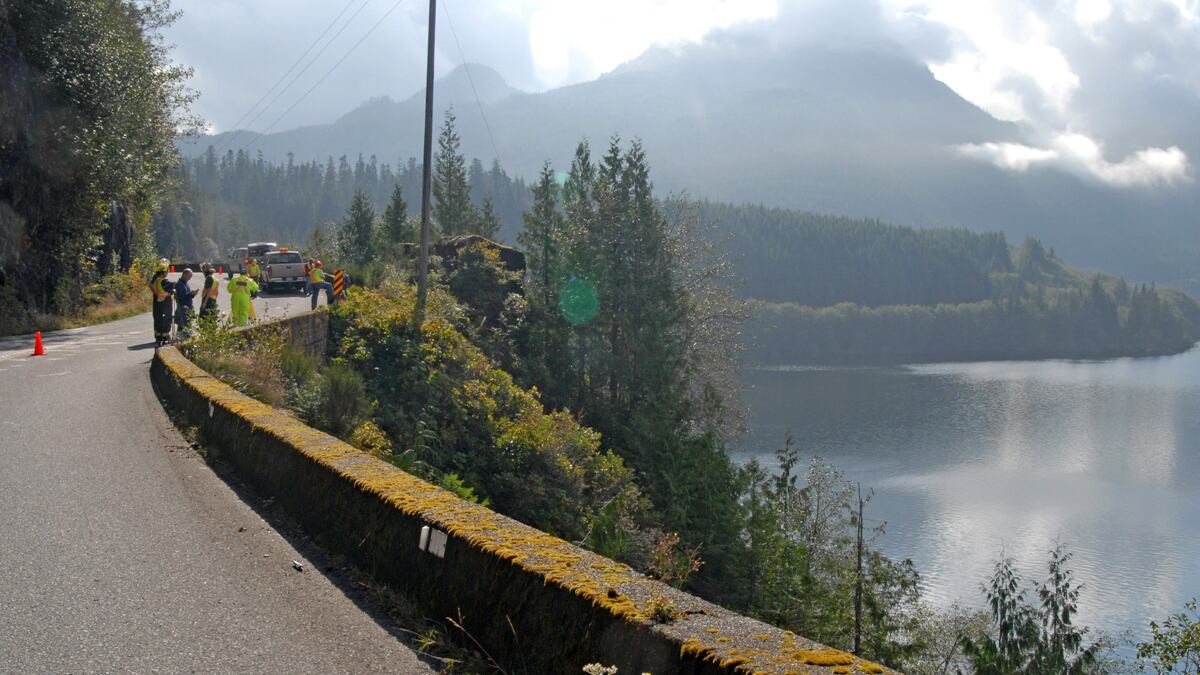There are few roads on earth more dramatically breathtaking than Canada’s Highway 16. The lonely 837-mile stretch of asphalt slices east-west through British Columbia, winding its way through towering snow-capped peaks, bustling mill towns, and a remote wilderness that feels as if it hasn’t been touched since the beginning of time.
It’s against this ruggedly beautiful backdrop that people are disappearing, the most recent in late May, when 20-year-old Madison Scott vanished near what has come to be known as the Highway of Tears. Scott was last seen at 3 a.m. on the night of May 27 at Hogsback Lake, a popular camping and party spot, about 15 miles south of her small town of Vanderhoof. A few days after Scott went missing, police found her tent and pickup truck at the campsite, but there was no sign of the young woman. Search parties came up empty handed.
It’s a distressingly familiar scenario to those who live around here.
“The whole town is still in complete shock and no one knows what to think,” said Hannah White, a reporter with the Vanderhoof Omineca Express. “She really had her head screwed on. We don’t think she just wandered off drunk and fell into the lake. It is completely off character. I don’t know if they will ever find her at this point.”

Scott’s fate appears to be the latest in a three-decade-long period during which numerous women have been killed or gone missing near three of B.C.’s northern highways, most prominently Highway 16. It is especially shocking for Canada, a country where murder is rare (610 homicides in 2009, compared to the United States’ 13,636). And while the Royal Canadian Mounted Police say the number of missing and dead totals 18, aboriginal leaders in the area say the real number is much higher, around 43.
Some believe that Highway 16 is the trolling ground of a serial killer (or killers). Others put the blame on truck drivers who regularly haul timber and other resources through the remote communities. According to the RCMP statistics, 10 of the 18 apparent victims live in remote aboriginal communities and use hitchhiking as a means of getting around.
“Whether it is one person or whether it is a few individuals, it is really open to speculation,” said Chris Freimond, a spokesperson for the government-funded Missing Women Commission of Inquiry, which plans to hold informal hearings about the disappearances and murders this month. “It could just be that some sick people up there realize that women hitchhiking alone are easy pickings. Towns are far apart and there are long stretches of road. Sometimes the radio fades out and there is no cell service. There are logging roads off every highway. If someone has bad intentions, you will find a victim. Someone can go off and drive for an hour and throw a body into a ravine and they would never be found.”
The murders and disappearances became national news (and, some say, finally got the attention of the police) when 25-year-old tree planter Nicole Hoar, who is white, went missing along the Highway of Tears on June 21, 2002. Hoar was last seen hitchhiking near a gas station near Prince George, known as B.C.’s northern capital, and despite a full-scale RCMP investigation, she has never been found.
The attention showered upon Hoar’s case drew criticism from aboriginal community members who argued that police didn’t adequately investigate previous cases involving the highway’s aboriginal victims. “Many of them were aboriginal and some of the talk out there was that people cared more about the non-aboriginal girls going missing,” said Lorna Brown, the aunt of 22-year-old Tamara Chipman, who went missing in September 2005. “Those families felt like they weren’t taken seriously.”
Since then, authorities have made efforts to bring cohesion to the investigations. In the fall of 2005, an RCMP task force called Project E-Pana, named after a God in Inuit mythology, was formed to look into the 1994 slayings of three 15-year-old aboriginal girls, all found near Highway 16, whose cases were possibly linked to a serial killer. The search was soon expanded back to the mid-1960s. RCMP Staff Sgt. Bruce Hulan, who oversees the E-Pana team of 26 investigators, said detectives combed through more than 200 unsolved cases of violence against women. They soon expanded their search further to two other northern highways, which turned up even more similar cases, including 16 sex-crime incidents. Still, a solid link has eluded them.
“We can’t say that any of our files are connected through DNA evidence,” Hulan told The Daily Beast. “When you go back to the question about whether we have DNA evidence of a serial killer at this point, we don’t have evidence to indicate that.”
Aboriginal leaders argue that the pool of victims is still larger, and even includes men and at least one family. And they say authorities are mostly just talk when it comes to concrete efforts to find the perpetrators. “There is no political will at all,” said Angela Marie MacDougall, executive director of Battered Women’s Support Services. “Zero. Unless you have law enforcement and various levels of government involved, it doesn’t go anywhere.”
As such, some private citizens have tried to aid the investigation themselves. Tony Romeyn, a Prince George lumber and mining supplier, started a website called highwayoftears.ca. The website provides pictures of the victims and details where they were last seen. “When Tamara [Chipman] went missing, it struck me,” said Romeyn. “I wanted to help families post information about their children. All of the women were very special.”
Also helping out is Vancouver-based private investigator Ray Michalko, a former RCMP, who began investigating the disappearances in 2006 because the “police weren’t doing much and I get along well with the aboriginal people and I thought a non-cop could work.” Michalko said he spends at least 40 hours a week chasing down leads and has passed along tips to the police, but they have “made it quite clear they didn’t want any help from me.”
The biggest problem with the investigation, said Michalko, is that the cases weren’t adequately investigated when they happened, and “it now makes it almost impossible because you now have a situation where [the aboriginal people] don’t trust the police.”
Hulan disagrees. “We have conducted a complete and thorough review of all of the files,” he said. “Did they hit a wall? In some of those cases they possibly did. DNA wasn’t available to them.”
In 2009, it was beginning to look like cops had finally caught a break when they descended on the property of a Prince George man, who told police that he and a friend stopped to urinate near the same gas station where tree planter Hoar disappeared. Investigators carried off boxes of evidence from the man’s property, but no arrests were made. Then, in February of this year, over 100 taxi drivers in the city of Prince George were asked by investigators to provide DNA samples. Hulan said that the DNA requests had nothing to do with the highway investigations, but community members suspect otherwise.
In April, police circulated a composite drawing of a man— white, with long white hair, in his sixties or seventies—who attempted to kidnap a 20-year-old Kamloops woman on a road that leads to Highway 97, one of the three highways in question. He had flagged her down on the side of the road in a Dodge pickup truck with its flashing emergency lights on. When she got close to him, he tried to force her into the truck, but she escaped and called the police.
Later this month, officials from the Missing Women Commission of Inquiry, which was formed to look into police misconduct involving Canada’s most prolific serial killer Robert Pickton, plan to visit four northern cities to gather information about the disappearances and murders. Some say it is too little too late, and are calling for a separate inquiry into the RCMP’s handling of the highway murders and disappearances.
Mary Teegee, the director of child and family services for Carrier Sekani Family Services, said that police have made efforts, but they still need to step it up. “There is a long history where people have felt they can’t trust the RCMP,” she said. “We haven’t felt supported and there is a long way to go. With this case they have made efforts. There have been baby steps made.”
As for missing woman Madison Scott, police are keeping quiet about the investigation. They say there is no indication that Scott is a victim of foul play, or that she was hitchhiking when she disappeared. “We haven’t ruled anything out, but there is no indication [her disappearance] has anything to do with Highway 16,” said RCMP Sgt. Rob Vermeulen. “It is a mystery. There is no evidence of what happened to her.”






